How To Start a Subscription Business: A Guide

How do you spend your weekend?
Maybe you head for the shower and lather up with the all-natural body wash you had delivered. You belt out a few tunes, with Spotify as your backing track.
Next, you prepare lunch. It only takes 20 minutes to turn your meal kit into a delicious dish.
Later in the day, you flick through your vast photo library in the cloud, before settling down on the sofa to watch Netflix.
Notice the link? Every activity was paid for with a subscription.
That’s no coincidence. Subscription-based businesses generated an estimated $3 trillion in 2024.
Want to jump on this runaway train? In this guide, we’ll give you the lowdown on building your subscription business model — from pricing to customer retention.
Let’s get started!
How the Subscription Business Model Actually Works
On the surface, the subscription model looks pretty straightforward: a customer signs up, and you take the agreed amount from their bank account every week or month.
That’s a license to print money, no?

Well, not quite. The catch is having to deliver products or services for that price, and still make a profit.
There are four primary models that companies use to navigate this financial high wire:
Curation Subscriptions
Some companies deliver value by curating products that you’re likely to enjoy. Subscribers discover something new every month, which is like having 12 birthdays a year.
- e.g. Birchbox, FabFitFun
- Pros: High engagement through surprise and delight factor
- Cons: Higher churn rate as the novelty wears off, complex logistics
Replenishment Subscriptions
These subscription services provide a consistent supply of essentials, like coffee and razor blades. Some businesses can offer lower prices thanks to recurring revenue; others lean into premium products and the convenience of home delivery.
- e.g. quip, Bean Box
- Pros: Strongest retention rates, predictable inventory needs
- Cons: Lower profit margins due to competitive pricing
Access Subscriptions
With this revenue model, recurring payments are the price of admission. Joining the club gives you certain benefits, like watching exclusive TV shows or getting discounts at your favorite stores.
- e.g. Netflix, Thrive
- Pros: Strong loyalty through exclusive benefits, often low ongoing costs
- Cons: May require regular upgrades to keep customers happy
Hybrid Models
Some subscriptions are stacked on an initial purchase. For example, tech companies will break even on a smartphone to make a profit on cloud storage. Warranty plans work the same way.
- e.g. iPhone with Apple One
- Pros: Diversified revenue streams
- Cons: More complex to manage; potential to confuse customers about core offer
Well, that’s quite a menu. If you’re thinking about building your own subscription business, it’s worth considering how these models might fit your offer.
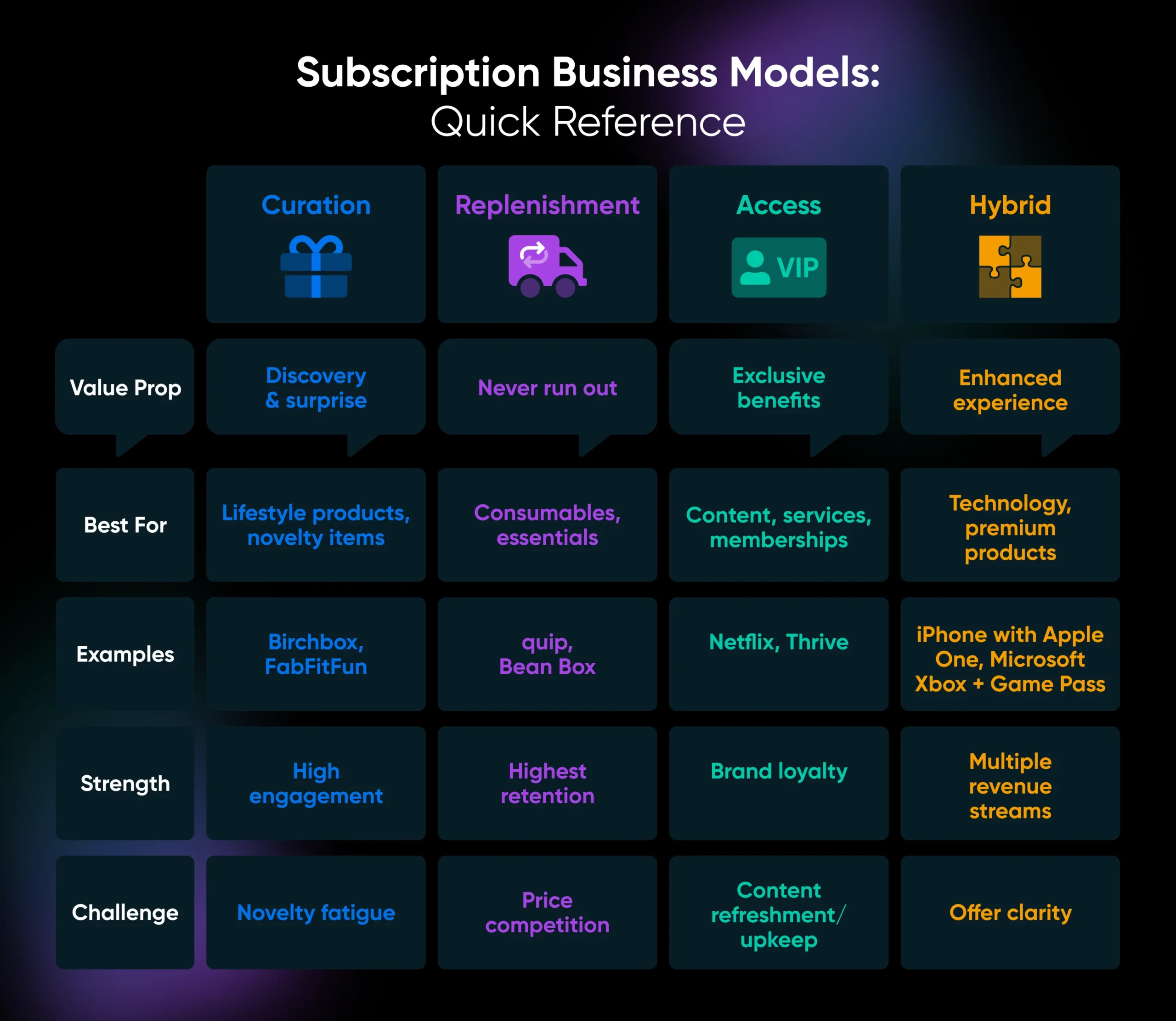
Why You Should Choose the Subscription Model
Despite the challenges, it makes a lot of sense to choose a subscription model.
The Zuora Subscription Economy Index (SEI) tracks the success of brands in this category. Over the past 12 years, the index has grown 3.4 times faster than the S&P 500.
Plain English translation: the subscription economy outperforms the rest of the business universe by a country mile.
That’s because:
- They have predictable revenue – While customers can churn, recurring income from monthly payments makes it easier to balance the books.
- The subscription model maximizes customer lifetime value – Instead of a one-off purchase, you’re making money over and over again.
- Customers like it – You might hear the occasional moan about subscriptions, but most people prefer paying less upfront and having the option to cancel.
6 Steps for Starting a Successful Subscription Business
This all seems very promising. The only hurdle is actually building a successful business from scratch.
Not sure where to start? Well, we’ve created a complete blueprint.
Follow the steps below, and you’ll be on your way to a multi-million dollar empire. Or a multi-dollar one, anyway.
Step 1: Find Your Subscription Niche
In most respects, a subscription-based business is like any other. You need to figure out:
- What to sell
- How to sell it
- Whom to sell to
- How much to charge them
- Where to work from
The best way to come up with these answers is through market research.
Start by identifying potential customers. Talk to them to find out what challenges they face and desires they hold. Your subscription should scratch that itch.
Next, head over to Google. See if there are any other businesses offering something similar. Take note of what they are charging. And see how many competitors you have.
The aim is to validate your idea and find where you would fit in the market. As long as you’re solving someone’s problems, you can build a business!
Need some inspiration? Fast‒track your success with DreamHost’s powerful Business Tool Suite, which includes the AI Business Advisor. This dynamic, AI-powered tool is ready to help you tackle time-consuming tasks with ease and efficiency.
Step 2: Define Your Offer
Your next task is to create a distinctive offer. Which is easier said than done…at this point, most ideas have been tried.
Remember, you don’t need something unique. You just need an idea that makes you different.
Take Netflix as an example.
This streaming giant was originally a DVD rental company. It wasn’t the first, by any means. However, Netflix offered something different.
Not only could you get DVDs delivered straight to your door, but you could keep them for as long as you were subscribed.
Later on, Netflix took advantage of improving Internet speeds to offer a streaming service — another big differentiator.
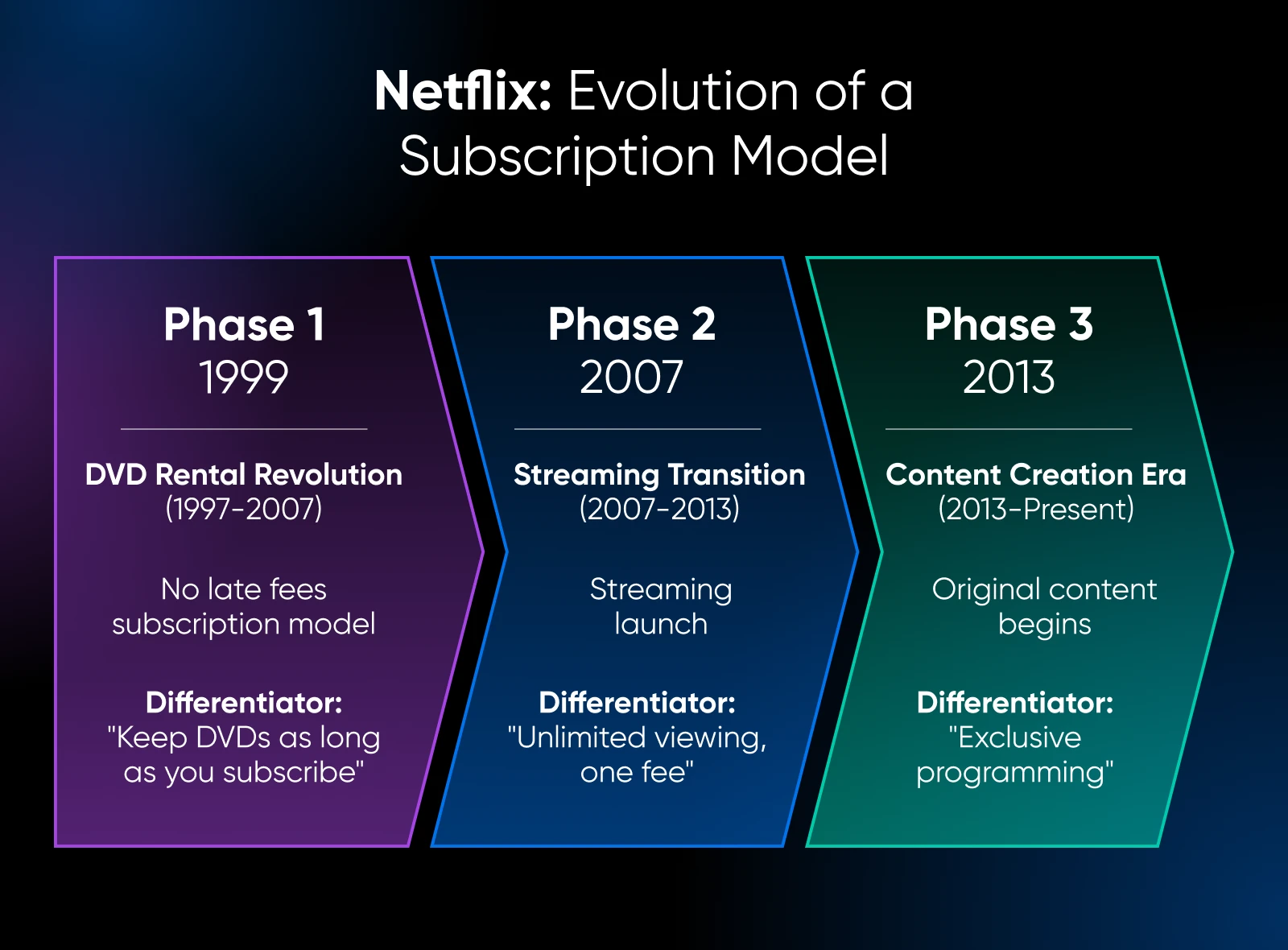
As you begin planning your business, consider how you can offer something that stands out in a similar way.
That could mean:
- Unique branding
- A different subscription model (e.g., access vs. curation)
- Different products or services (e.g., physical vs. digital products)
- Pricing that appeals to a different audience
Speaking of pricing…
Think Carefully About Your Pricing Model
When you ask someone to commit to weekly or monthly payments, you need to provide plenty of value.
At the same time, that subscription fee is probably quite small. You’re not getting a big upfront payment that you can invest in inventory and customer acquisition.
For this reason, pricing is super important for subscription-based businesses. It’s a careful balance. You need to make a profit, while still being affordable enough to attract your target audience — and keep them hooked in a long-term relationship.
This is why market research matters. See what other services are charging, and what benefits they are offering. This can be a good starting point for your own model.
Remember: you can offer different prices for subscription tiers. You could have a cheaper tier to entice new subscribers and then offer upgrades for folks who want more.
Step 3: Set Up Your Business
Having crafted your offer and calculated the right pricing strategy, you’re ready to launch!
Well, you’re ready to do some paperwork, anyway.
Register your business and file all the necessary forms with your local authority. That includes any industry-specific seller licensing.
To register your business, you need a trading name. This doesn’t matter too much; you can always offer your subscription under a different brand name.
You also need a business bank account and an accounting solution. As you’re just starting, something like QuickBooks should do the trick.
For a more in-depth look at the startup process, go visit our complete guide to starting a business!
Step 4: Create Your Website
A good website is the foundation for a subscription empire.
It’s where customers can find out about your offer, sign up for a new subscription, manage their account, and get support.
If you choose the right platform, your website should also handle payments, control access to member benefits, record your sales, and even track your inventory.
Let’s walk through the process of setting up your site:
Pick a Platform
Where you decide to build your site has a big impact on the features you can access.
The most popular picks include:
- WordPress: The best choice for most businesses. It’s free, self-hosted (meaning you’re in full control), and easy to upgrade with plugins. We have dedicated plans that make it super easy to get started!
- Ecwid: Want something simple to start with? Ecwid is easy to use and free. With this CMS, you can launch an online store in minutes via our hosting plans.
- Shopify: This fully hosted e-commerce platform is popular and powerful. The main downside for startups is that it’s pretty expensive; the official subscriptions plugin also has mixed reviews.
- Wix or Squarespace + MemberSpace: If you’re running an access model, MemberSpace can add this feature to any website via a code snippet. However, it really only works for paywalls.
The choice isn’t easy. To help you decide between the more powerful options, we created a detailed comparison between WordPress and Shopify.
Design an Appealing Homepage
When a potential subscriber lands on your website, you only have a few seconds to impress them. So, you need a homepage that will blow their socks off.
Here’s the recipe:
- A big, bold pitch – In a few words, summarize what makes your service uniquely awesome.
- A generous helping of eye-catching images – Don’t make people read; give them photos that sell your service at a glance.
- Concise text, highlighting the key benefits – There’s no need to dive into the details. Use bullet points to explain why people should subscribe.
- Unmissable call-to-action buttons – Make it easy for people to find out more and sign up.
Here’s an example from payment processing company Stripe, whose homepage effectively combines all these elements:
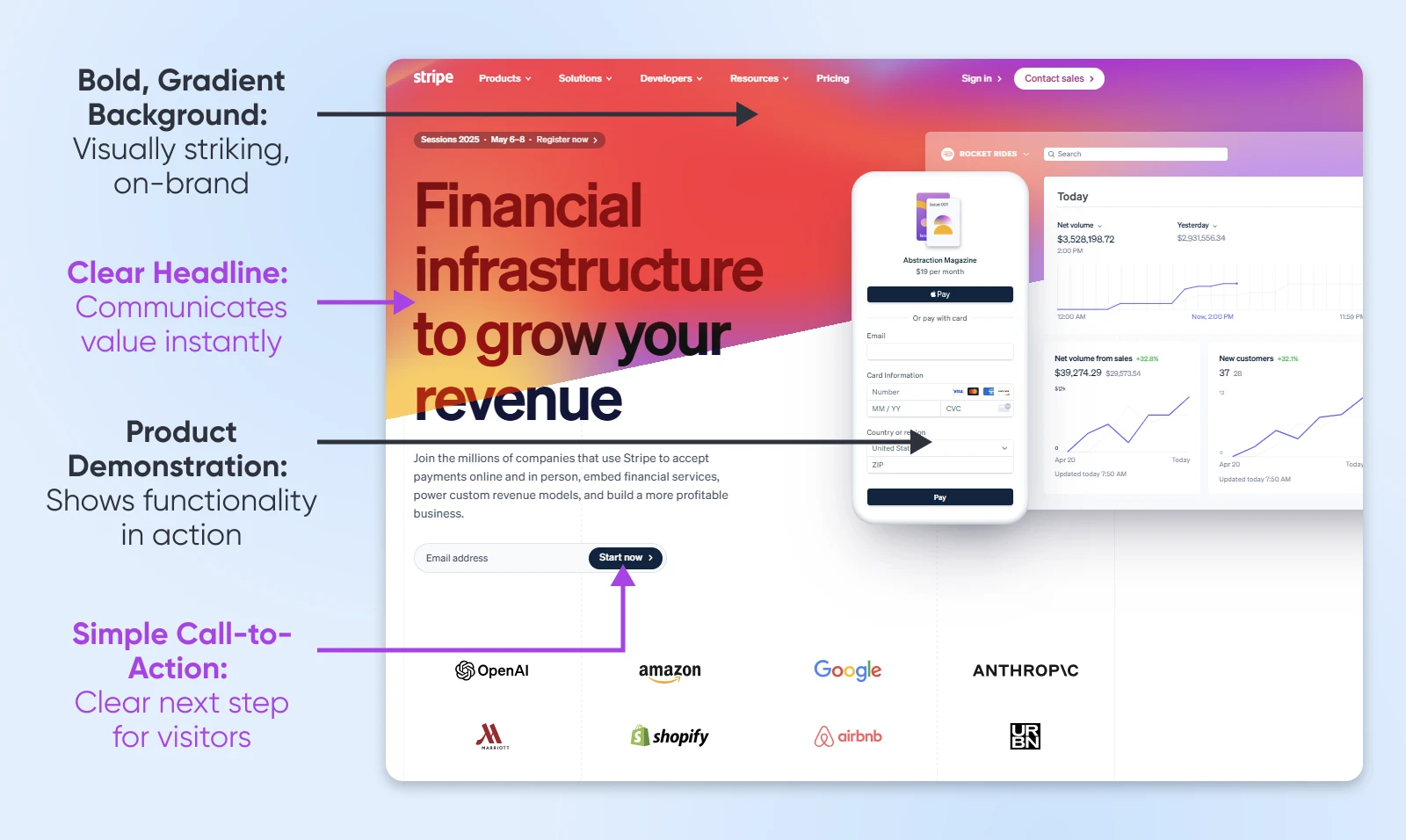
Need help with the visual side? Check out this introduction to web design.
Build Out Your Pages
How do you turn a spark of interest into purchase intent? With an outstanding sales pitch.
In the online realm, that means crafting product pages that make your service or products look amazing.
A good product page should be a more detailed, long-form version of your homepage. Here, you can expand on all the benefits and add more images that sell the subscription.
And again, you should have CTAs all over the place. Don’t make people search for the buy button!
Our guide on building an online store has lots of great advice on this topic.
Optimize the Checkout Experience
Here’s a fun fact: almost a quarter of online shoppers back out of making a purchase because they have to create an account.
Similarly, 17% of consumers leave because the checkout process is too annoying.
In other words, you need to make it really easy for people to sign up.
Once you have set up your store, take a look at the checkout. Which parts could you remove or streamline?
Think about payments, as well. Give people several different ways to pay, so they can choose the most convenient option.
Remember, you need a system that can automatically take recurring payments. No one wants to pay separately for each installment of a monthly subscription.
Remember the Backend Features
What else do you need to grow your business?
Well, you’ll probably want to know how many people visit your site and become subscribers. And this data can help you determine your customer acquisition cost (CAC), or how much you’re spending for each new subscription.
To see these numbers, you need to use a tool like Google Analytics or WooCommerce Analytics.
You also need some way of tracking inventory that syncs with your e-commerce solution. WooCommerce and Shopify both have this feature, but you will have to set it up.
Step 5: Figure Out Your Logistics
If you plan to run a subscription box or any service that involves delivering physical products, you need to get your logistics sorted.
That means identifying:
- Suppliers for your products
- Storage for those items
- A delivery system (including packing)
This is a lot of work, but it’s important to get a solid system in place. You don’t want packages going missing or products going to the wrong customer.
Here are some options to consider:
- Product sourcing: Contact small brands, local wholesalers, and sites like Alibaba and Faire. Order small to start with; don’t be afraid to negotiate on price.
- Fulfillment and warehousing: Use services like ShipBob or Amazon FBA if you don’t want to fill your spare room with inventory.
- Shipping: Choose reliable partners like UPS, FedEx, and USP. Downsize your packaging to reduce shipping costs.
- Inventory: WooCommerce, QuickBooks, and Zoho Inventory offer affordable ways to track your stock.
Even if your subscription is digital-only, you still need to consider delivery.
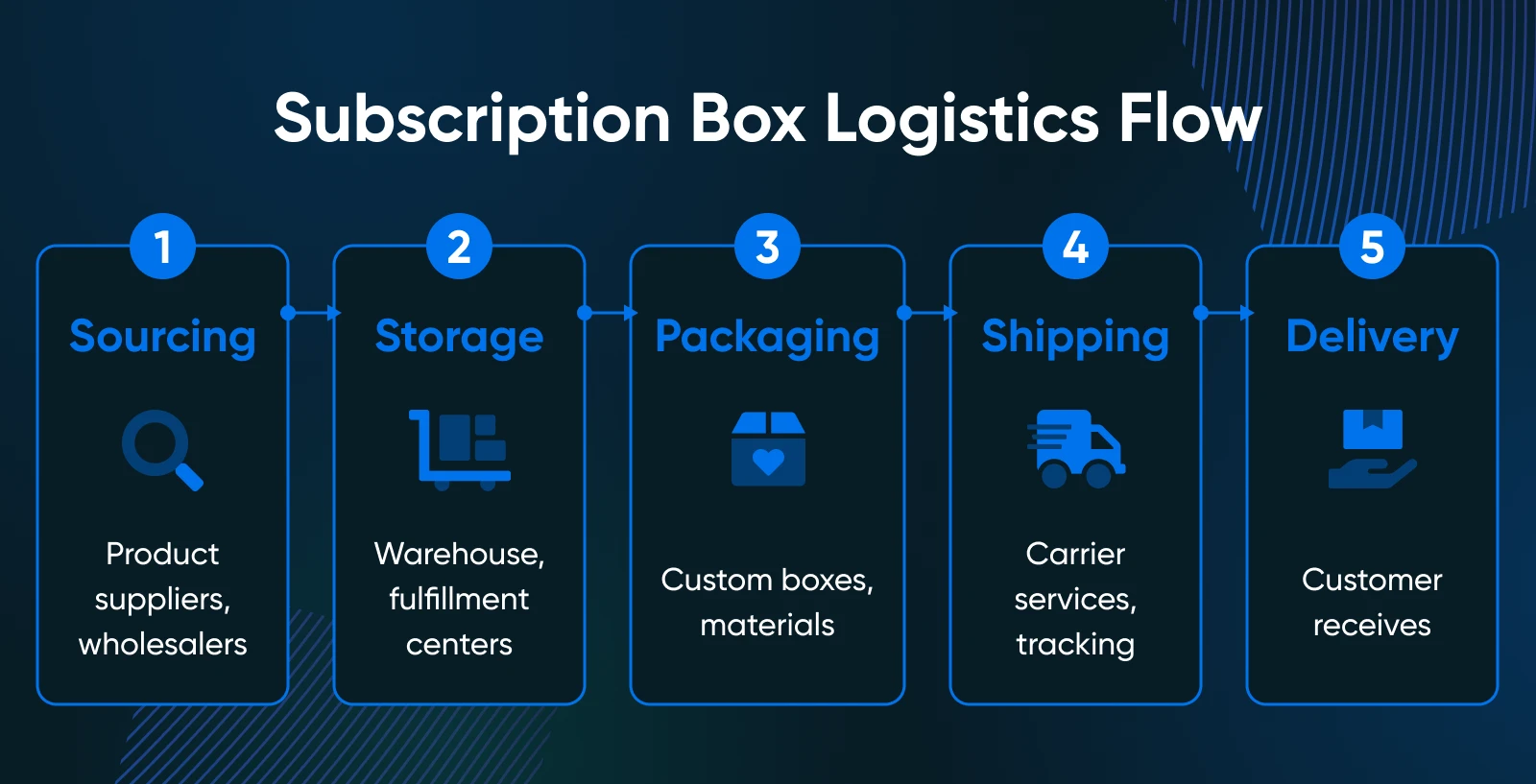
If you set up a WordPress website, you could deliver downloads via WooCommerce and provide exclusive access to content using MemberPress.
Once you have finalized your logistics workflow, test it. There’s no better way to find the flaws!
Step 6: Time To Start Marketing
At last, you have everything in place to run a successful service.
Actually, there’s just one thing missing. You need some customers.
There are countless ways to market your new business, from social media ads to handing out flyers in the mall. The key is to create a strategy that matches your ideal customer profiles (ICPs).
Think about:
- Where your ideal customers hang out, both online and in the real world
- What they’re interested in
- What type of content they enjoy
- Which brands and influencers they already follow
This information should help you identify the best channels for reaching new subscribers.
If you’re stuck for inspiration, here are some marketing tactics that work for brands in the subscription space:
- Affiliate and influencer marketing – Used by companies like Birchbox and HelloFresh, this tactic leverages established names in your niche who earn a commission for promoting your service. It’s great for expanding your reach.
- Subscription discounts and free trials – As used by Netflix and Dollar Shave Club, discounts and free trials can entice new customers to try your service.
- Email marketing – Mastered by brands like Blue Apron, newsletters keep subscribers engaged with recommendations, promotions, and updates. This helps nurture leads and increase customer retention.
- Community building – Some businesses create online groups to build a community around their brand, which helps to build loyalty. Peloton uses this tactic well.
- User-generated content (UGC) – Encouraging customers to share photos of their box contents on social media is a powerful tactic used by many businesses, including BarkBox.
Combine two or more of these tactics and carefully target your marketing efforts. With a little luck, you should see the customers start to roll in!
The Battle Against Churn
Aside from making a profit, the biggest challenge in subscription models is customer churn. (That’s when a subscriber decides to break up with your brand.)
This is nightmare fuel for founders. Instead of receiving that lovely recurring fee for the rest of time, you have nothing. Zilch. Nada.
For this reason, fighting churn rate should be the top priority for any subscription-based business.
How do you stop people leaving you? You should:
- Work on building strong customer relationships. Regular communication and strong customer support are essential. Customer loyalty can save you from the dreaded cancel button.
- Make your subscription hassle-free. Your customers choose a subscription to solve their existing problems. Don’t create new ones!
- Regularly revisit your pricing. The subscription-based model only works if you’re competitive. Ask your customers if they are getting good value, and track the price point of other services in your niche.
- Get feedback from subscribers when they leave. It’s always painful to get an honest review after a breakup. But in this case, you could glean some really valuable insights as to why people might consider canceling.
While churn is inevitable, these techniques should help you to keep more customers than you lose.
What does a healthy churn rate look like? Here are some benchmarks, courtesy of Churnkey.
- SaaS /software companies: 4–6% per month
- E-commerce: 10–15% per month
- Entertainment: 5–8% per month
- Health & Fitness Subscriptions: 7–10% per month
- Financial: 2–4% per month
- Learning: 8–12% per month
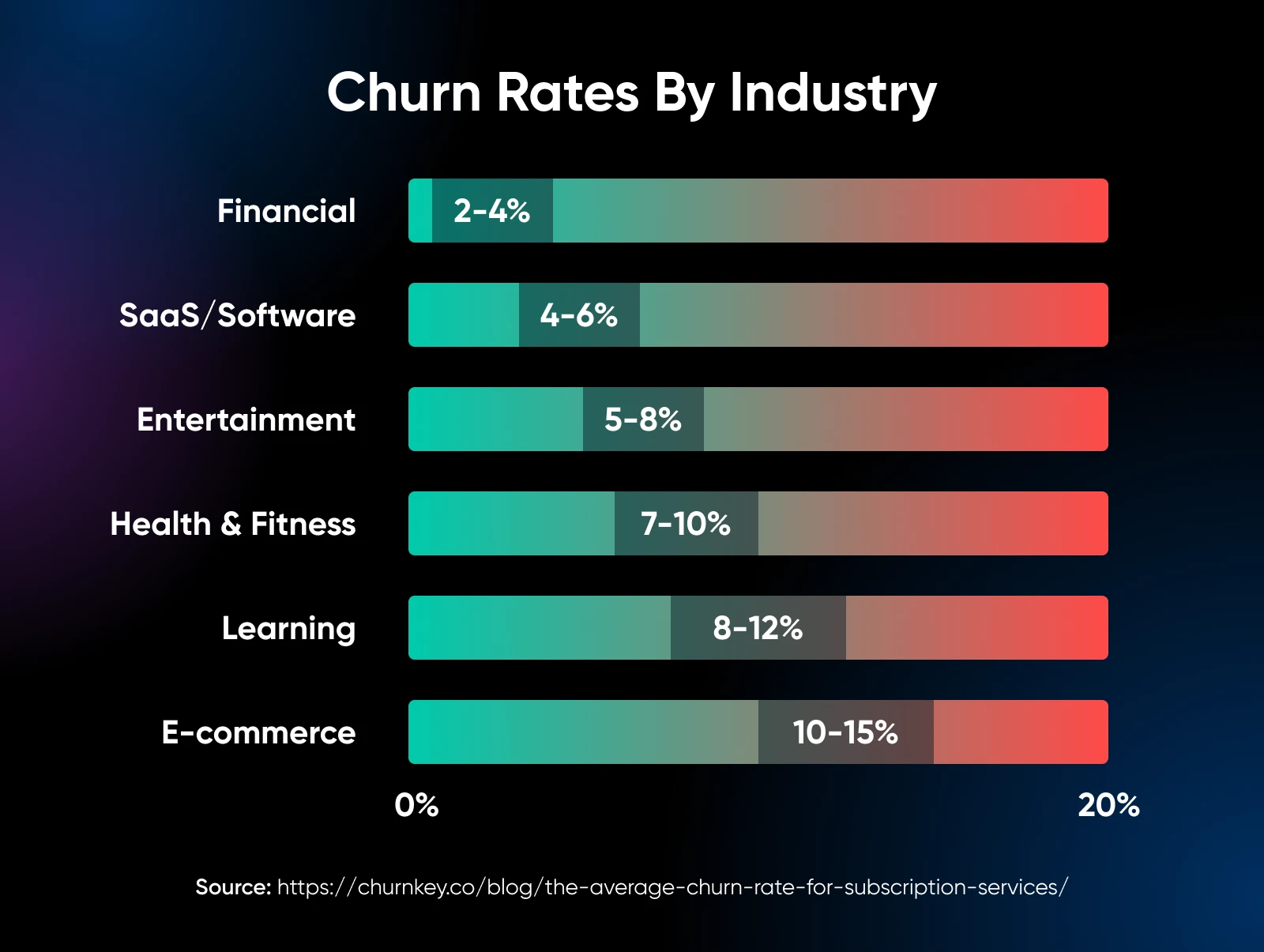
Just bear in mind that a 5% monthly churn rate means you’ll lose all your existing customers by this time next year!
So, subscription brands must work equally hard on customer acquisition to maintain healthy revenue.
Launch, Grow, Thrive
Building a subscription business is no easy feat.
You need the right type of subscription model, with the right products and services, delivered for the right price. You also need to fight churn while enticing new subscribers to join.
But get it right, and the rewards can be incredible. More than half of the world’s biggest companies by revenue operate subscriptions. You could be next!
When you’re ready to start, consider setting up your site with DreamHost. Our hosting plans power over 1.5 million websites, including thousands of startups like yours.
Sign up today to join the party!
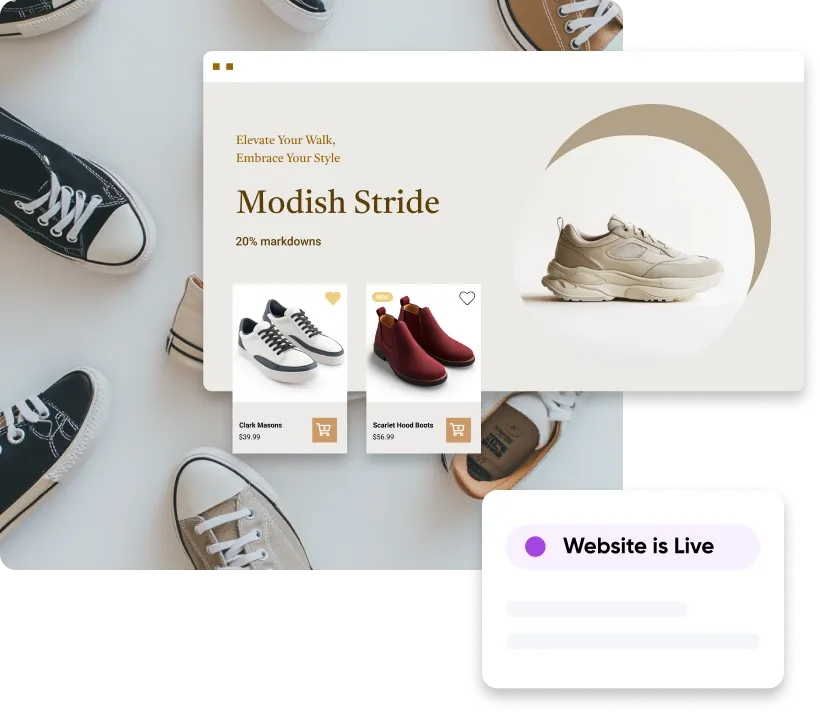
Online Store
Build Your Dream Store in Minutes
Sell anything, anywhere, anytime with confidence through DreamHost’s powerful e-commerce solutions. Choose between beginner-friendly Ecwid or fully customizable WooCommerce, both backed by DreamHost’s reliable hosting, 24/7 expert support, and money-back guarantee.
View Plans
This page contains affiliate links. This means we may earn a commission if you purchase services through our link without any extra cost to you.



